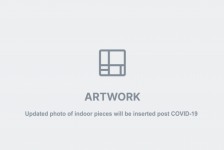Made up of 30,000 colour LED’s, this mesmerizing installation from artists Michael Awad and David Rokeby, aptly named Pixel Cube, hangs delicately in the foyer of the Telus building at 25 York Street. As each LED can be individually controlled, the selective lighting of the pixels allows for dynamic light sculptures to be created. The combined pixels form a surface that is three dimensional and can update at full video speeds, presenting both abstract and real-world imagery on and inside of the cube. The cube can either present material that is prepared in advance or can be interactive in nature, changing intuitively before the viewer’s eyes.

Pixel Cube

Michael Awad
b.1966
David Rokeby
b.1960
- 30,000 individually controllable colour LED lights
- 2009
- 3.6 m x 4.6 m x 5.5 m
- 25 York Street, Telus Tower, Toronto
About the artwork
About the artist
A prolific artist, architect and academic, Michael Awad has truly left his mark upon the City of Toronto. He has taught at the University of Toronto School of Architecture for more than 10 years, and is a faculty member in the School of Urban Planning at Ryerson University. Working primarily with the medium of photography, Awad’s practice is unique to him as he builds his own camera equipment and creates his own image processing software. The “city” can be described as his principle and only subject.
Since 2005, Awad has partnered with fellow artist David Rokeby to create public art installations through sculptural forms. The pair has collaborated on works at the Ontario Science Centre, Union Station, and the Ripley’s Aquarium of Canada. Awad was the recipient of a Toronto Urban Design Award for his public artworks in 2011, and has participated in public art selection committees for all three levels of Canadian government. In serving as Chair of the Board of InterAccess, a centre dedicated to new media art in Toronto, Awad has been granted the opportunity to lend his experienced voice to the local arts community.
Awad’s photographic work has been shown in exhibitions at the The Power Plant Contemporary Art Gallery, the Art Gallery of Ontario, and the Royal Ontario Museum. In 2002, he was Canada’s official representative to the Venice Biennale of Architecture, and shortly thereafter, was commissioned to design the Canadian pavilion for the Visual Art Biennale of Brazil in São Paulo.
David Rokeby has been creating works of electronic, video, and installation art out of his studio in Toronto since 1982. While he initially focused on making interactive pieces that directly engaged with the human body, or that involved artificial perception systems, Rokeby has expanded his practice to include kinetic and static sculpture. In his art and essays, Rokeby explores the “social, political, and psychological challenges posed by emerging technologies, and conversely, how these can be used to expand the dialogue about what it means to be human in our contemporary world.”
Rokeby has performed and exhibited in shows across North America, Europe, and Asia. His early piece, Very Nervous System, presented at the Venice Biennale in 1986, is still acknowledged as a pioneering work of interactive art. Examining the human relationship with digital machines, the piece translated physical gestures into real-time, interactive sound environments.
Rokeby has been awarded with the first BAFTA (British Academy of Film and Television Arts) for Interactive Art in 2000, a 2002 Governor General’s award in Visual and Media Arts, and the Prix Ars Electronica Golden Nica for Interactive Art in 2002.
Fun facts
- Michael Awad was commissioned to create a version of his Entire City Project for the Royal Ontario Museum. Capturing multiple panoramas of the space, Awad describes his pieces as an attempt to visualize "the totality of the environment." The sheer amount of detail within the photographs can easily overwhelm anyone who tries to take a closer look. - Keep an eye out for more pieces within the Entire City Project series because Awad has said: "I love this city. I'll do it until I can't hold a camera".
- David Rokeby has expanded his creative skillset to include computer programming, and has even coined a phrase that is familiar to artists working with "dataveillance" (i.e. the practice of monitoring digital data relating to personal details or online activities). Algorithmic pollution suggests "the importance of invisible information as matter that affects public behaviour from both a physiological and psychological view".
Engagement questions
- How do the different elements in this work contribute to a central theme?
